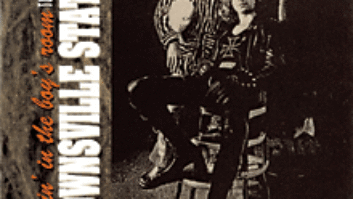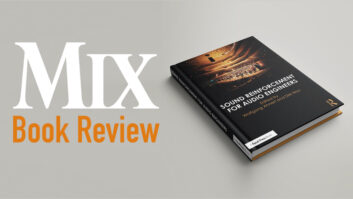
Rockin’ Your Stage Sound: A Musician’s Guide to Professional Live Audio (Hal Leonard) covers a lot of ground, serving up advice for beginners and near-experts alike on everything from how to make the most of your gear, to technical analysis of club audio systems, to how to get along with the house engineer. Given the title, you know who the intended audience is, but there’s plenty of useful information for aspiring engineers entering the live sound world or pros who want to reaffirm their knowledge (i.e. “I sorta knew this info; I just couldn’t phrase it all tidy like that”).
Author Rob Gainey has mixed at clubs all over Los Angeles for 30 years and was the house engineer at the legendary Troubadour. During his career, he’s mixed house, monitors or stage managed the likes of Mötley Crüe, the Wallflowers, No Doubt, Weezer, Incubus, System of a Down and plenty of others, so when it comes to the world of live club audio, the guy speaks from experience.
The fruit of that experience is organized to the hilt, as the 246-page book is divided into a mere eight chapters: Your Sound; Setting Up; Monitor Systems; Input Sources; Getting Organized; Soundchecking; Making It Work; Technical Aspects; and a great audio glossary. The chapter titles may be loosely defined, but that gives Gainey leeway to jam dozens of subsections into each one, so readers can quickly zero in on the info they need, thus getting in and out of the book fast. While Rockin’ Your Stage Sound is certainly readable from front to back, the hyper-organized format is perfect for anyone who just wants to dip in for a quick brush-up on a topic.
The chapter names are so generalized that they may seem a little misleading. A title like Getting Organized may have you expecting stuff like “Don’t forget your amp, dude,” but in fact, it’s full of smart advice on developing stage plots; making sound, light and monitor cue sheets; the importance of input lists; and so on.
Similarly, the Input Sources chapter digs in deep with easy-to-grasp information on microphone usage, discussing their patterns, applications, where they belong on stage and why. Again, due to the heavy use of subsections everywhere, the same page that includes in-depth discussion of ribbon microphones and why they’re so beloved yet typically not used for live sound, also includes a section plainly titled “Most unbalanced mics are cheap toys.”
Ask any live sound engineer how he broke into the business, and 99 times out of 100, he’ll say he started out in a band. Perhaps realizing that some folks reading the book will wind up behind the desk for a living, Gainey’s final chapter, Technical Aspects, explains some stage equipment more deeply, discussing specs and terminology, as well as the proper use and understanding of a Volt-Ohm meter, the difference between balanced and unbalanced connections, how to make a Hotshot, and more.
For many, however, the must-read chapter of the book will be its most non-technical. Making It Work is about finessing the system, clarifying to musicians the best ways to work with harried engineers and overburdened stage managers. While it all boils down to “Don’t be a jackass,” this section covers proper cooperative etiquette, explaining in detail what musicians should expect—and not expect—house engineers to do. As a result, the section is just as important and useful for budding audio pros because it provides a very clear definition of what is and isn’t your problem. It may not provide the answer to World Peace, but a quick browse through this chapter would probably diffuse 90 percent of the friction between bands and house crews.
In short, Rockin’ Your Stage Sound is a smart, useful book for any rock musician starting to swim in the pro or semi-pro waters, and likewise, it’s an illuminating read for beginning to intermediate audio pros entering the world of rock club sound for the first time.
Rockin’ Your Stage Sound on Amazon
http://amzn.to/rWsZB9







